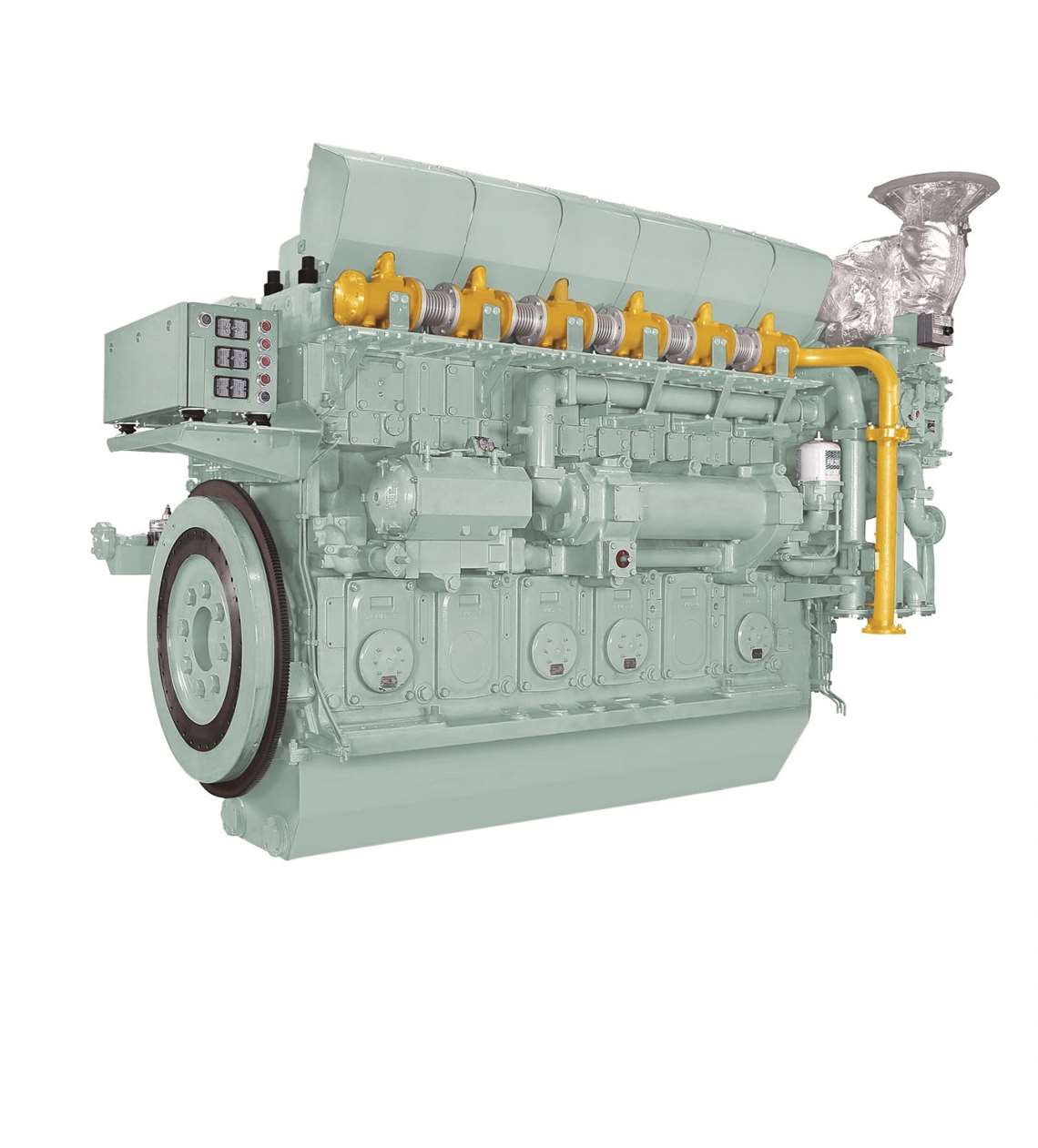The Dual In The Crown
21 November 2017

BY IAN CAMERON
Yanmar said it has completed the development of a new dual-fuel engine which it said enables vessel operators to switch to and from liquefied natural gas (LNG) and diesel fuel during operation.
The six-cylinder 6EY26DF engine has a rated power of 1.53 MW at 750 r/min and the fuel switch can be made even at full engine load.
The company said that there are no power limitations for the engine even for LNG which, Yanmar added, is a fuel source which can cause knocking in other engines due to it low methane concentration.
The new International Maritime Organization (IMO) Tier 3 regulations, introduced in January 2017, require an 80% reduction of nitrogen oxides (NOx) emissions from the Tier 1 levels, and a 20% improvement of carbon dioxide emissions by 2020 representing an annual tightening of emissions for vessels.
According to Yanmar, with the flexibility to operate using both LNG, which offers environmental benefits, and easy to obtain diesel fuels, the dual-fuel engine has drawn considerable attention in recent years as a solution that easily passes the Tier 3 emissions controls.
Yanmar said that by using its technology to control the air-fuel ratio and its knock detection system, the 6EY26DF delivers stability in gas mode. The company added that ignition with the micro-pilot injection system when in gas mode is as effective as a diesel engine.
Compared to the same-class EY26 diesel engine, Yanmar said the 6EY26DF, which is already commercially available, delivers 84% NOx, 25% carbon dioxide and 99% sulfur oxides and particulate matter reductions, meeting IMO Tier 3 standards. The gas mode exceeds Yanmar’s current diesel engine thermal efficiency ratios at 46.8%, said Yanmar which added that the new engine is suitable for any marine application which is gas-powered.
The company that while advanced electronic control is typically required for utilization of two different fuel types, the engine employs high-precision airflow technology that optimizes combustion conditions delivering stability and reliability when in operation.
Yanmar said it will continue its efforts towards expanding its dual-fuel engine line-up for vessels. The new engine has a bore and stroke of 260 x 385 mm.
Yanmar said that optimal air-fuel ratios for combustion can vary with load fluctuations and methane concentrations. Additionally, as diesel and LNG air and fuel requirements differ, the company said it is crucial that the engine is equipped with a device for optimizing air-fuel ratios.
STAY CONNECTED




Receive the information you need when you need it through our world-leading magazines, newsletters and daily briefings.
POWER SOURCING GUIDE
The trusted reference and buyer’s guide for 83 years
The original “desktop search engine,” guiding nearly 10,000 users in more than 90 countries it is the primary reference for specifications and details on all the components that go into engine systems.
Visit Now
CONNECT WITH THE TEAM









